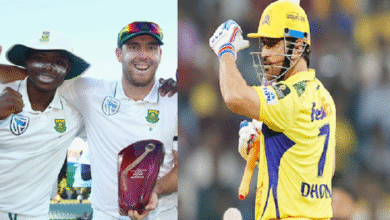
Introduction
Cricket is more than just a sport; it’s a global phenomenon that unites fans from all walks of life. Whether you’re a seasoned player or a curious newcomer, this guide will take you through the rich history, intricate rules, and cultural significance of cricket. Join us as we delve into the fascinating world of cricket and discover why it captivates millions worldwide.
The History of Cricket
Cricket’s origins trace back to 16th-century England, where it began as a simple pastime played by children. Over centuries, cricket evolved into an organized sport with established rules. The first recorded cricket match took place in 1646, and by the 18th century, cricket had become England’s national sport. The establishment of the Marylebone Cricket Club (MCC) in 1787 played a pivotal role in standardizing cricket laws, ensuring the sport’s growth and consistency.
The Basic Rules of Cricket
Cricket is played between two teams of eleven players each. The objective of cricket is to score more runs than the opposing team. A cricket match comprises two main formats: Test cricket, which lasts up to five days, and limited-overs cricket, which includes One Day Internationals (ODIs) and Twenty20 (T20) matches. The game starts with a coin toss, and the winning captain decides whether to bat or bowl first. The batting team aims to score runs by hitting the ball and running between the wickets, while the bowling team tries to dismiss the batsmen.
The Different Formats of Cricket
Cricket is played in various formats, each with its own set of rules and duration. Test cricket, the oldest and most traditional format, is played over five days, with each team having two innings. One Day Internationals (ODIs) consist of 50 overs per side and are completed in a single day. The T20 format, introduced in the early 2000s, features 20 overs per side and offers a fast-paced, entertaining version of cricket that appeals to a broad audience.
The Role of Players in Cricket
Each player in a cricket team has a specific role. Batsmen aim to score runs, while bowlers focus on taking wickets and limiting the opposition’s runs. All-rounders are versatile players who contribute with both bat and ball. Wicketkeepers play a crucial role behind the stumps, catching the ball and stumping batsmen. Fielders support the bowlers by catching and stopping the ball. The captain leads the team, making strategic decisions that impact the outcome of the cricket match.
Famous Cricket Players and Legends
Cricket has produced numerous legendary players who have left an indelible mark on the sport. Sir Don Bradman, often regarded as the greatest batsman in cricket history, boasts an astonishing batting average of 99.94. Sachin Tendulkar, known as the “Master Blaster,” holds the record for the most runs in international cricket. Sir Vivian Richards, Shane Warne, and Brian Lara are other iconic figures who have shaped the game with their exceptional skills and contributions.
Major Cricket Tournaments and Championships
Cricket is home to several prestigious tournaments that draw immense global attention. The Cricket World Cup, held every four years, is the pinnacle of ODI cricket, showcasing the world’s top teams. The ICC T20 World Cup, introduced in 2007, has rapidly gained popularity due to its thrilling and fast-paced matches. Other significant tournaments include the Ashes, a historic Test series between England and Australia, and the Indian Premier League (IPL), a T20 league that attracts star players and massive fan following.
The Cultural Impact of Cricket
Cricket is deeply ingrained in the cultures of many countries, particularly in South Asia, Australia, England, and the Caribbean. In India, cricket is akin to a religion, with fans passionately supporting their favorite teams and players. The sport has the power to unite people across social and economic divides, fostering a sense of community and national pride. Cricket also influences popular culture, with numerous movies, songs, and literature dedicated to celebrating the sport.
The Evolution of Cricket Technology
Technological advancements have significantly impacted cricket, enhancing both the gameplay and viewing experience. The Decision Review System (DRS) allows teams to challenge umpire decisions using video replays, ensuring fair outcomes. Hawk-Eye technology tracks the ball’s trajectory, aiding in accurate decision-making. Spidercam and drone cameras provide unique perspectives, making televised cricket more engaging for viewers. The use of data analytics has also revolutionized cricket strategies, helping teams analyze performances and devise effective game plans.
The Future of Cricket
The future of cricket looks promising, with continuous innovations and expanding global reach. The introduction of new formats, such as The Hundred in England, aims to attract younger audiences and make cricket more accessible. Women’s cricket is experiencing significant growth, with increased investment and media coverage promoting gender equality in the sport. Additionally, cricket’s inclusion in multi-sport events like the Commonwealth Games is set to boost its global appeal.
How to Get Involved in Cricket
Getting involved in cricket is easier than ever, whether you’re looking to play, watch, or support the sport. Local cricket clubs offer opportunities for people of all ages and skill levels to participate. Schools and community centers often organize cricket programs for children and beginners. Watching cricket matches, either live at stadiums or on television, allows fans to enjoy the excitement and drama of the game. Supporting cricket by following teams and players on social media and engaging with cricket content helps keep the sport thriving.
Conclusion
Cricket’s enduring appeal lies in its rich history, diverse formats, and ability to bring people together. Whether you’re an avid fan or new to the sport, there’s always something new to discover in the world of cricket. From legendary players to major tournaments, cricket continues to evolve and inspire millions worldwide. Embrace the excitement of cricket and become a part of this global phenomenon.
FAQs
1. What is the origin of cricket?
Cricket originated in 16th-century England as a children’s game and evolved into an organized sport over centuries, becoming England’s national sport by the 18th century.
2. What are the main formats of cricket?
The main formats of cricket are Test cricket, One Day Internationals (ODIs), and Twenty20 (T20) matches, each with its own set of rules and duration.
3. Who is considered the greatest cricketer of all time?
Sir Don Bradman is often regarded as the greatest cricketer of all time, known for his exceptional batting average of 99.94.
4. What is the significance of the Cricket World Cup?
The Cricket World Cup, held every four years, is the pinnacle of ODI cricket, featuring the world’s top teams and drawing immense global attention.
5. How can I start playing cricket?
You can start playing cricket by joining local cricket clubs, participating in school or community programs, and practicing basic skills like batting, bowling, and fielding.




